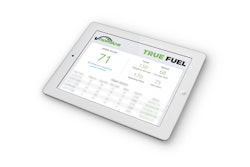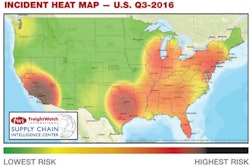
By the Federal Motor Carrier Safety Administration’s own estimates, the speed limiter rule proposal will cost the trucking industry billions of dollars. However, the agency predicts net savings for fleets with increased fuel efficiency and additional savings from accident reduction.
One item the FMCSA glossed over is the cost to develop tamper-proof speed limiters. The top speed of a vehicle can already be programmed into truck ECMs, but making the devices tamper proof will be a one-time cost of $150 million to $200 million, according to the Truck and Engine Manufacturers Association (EMA).
As mentioned in part one of this series, speed limiters are entry-level technology being used by a majority of fleets for fuel economy, maintenance and safety purposes. Making ECMs tamper proof may not be worth the upgrade. Newer and more advanced technologies, such as those found in many telematics systems, give fleets more – and perhaps better – options to manage speed.
SpeedGauge and Magtec offer one example of what is possible using “connected” speed limiter technology. SpeedGauge is a provider of business intelligence and location-based analytics. Magtec has been in the telematics space for more than a decade, specializing in vehicle security and control.
In September the companies announced a joint product called SafeSpeed that is able to adjust the max speed of a vehicle, by location, and while in motion. It works by an integration of SpeedGauge’s database of road speed limits with Magtec’s connected in-vehicle system.
Magtec’s vehicle security and control system can disable a parked vehicle until drivers enter an authentication code. Fleets can also use it to safely bring a moving vehicle to a stop, remotely, by initiating a shut down sequence that incrementally cuts throttle.

With the connected speed limiter technology, fleets can enforce speed policies automatically. The max speed of a vehicle is adjusted according to local posted speed limits. For example, if a truck is in a 35 mph zone, the truck is set while in motion so as to not be driven faster than 35 mph.
The system can be configured to tolerate thresholds such as giving drivers a 5 mph leeway past the posted speed limit, says Jonathan Hubbard, chief executive of SpeedGauge. The device in the vehicle also has a “quick override” button that gives drivers a two-minute window to exceed the location-based speed limit up to the max allowable speed for the vehicle.
Drivers may need to use the override option to pass a slower vehicle on the highway, he says, but the system tracks their usage and reports it to fleet management.
The companies tested SafeSpeed this summer with two carriers, he says, and now offer the product commercially.
“The biggest feedback we got from carriers is that it really helps them improve CSA scores,” Hubbard says.











